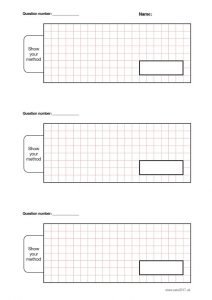How close are the online tests to the ‘real thing’?
With the exception of English Reading, our online tests are marked instantly and accurately, saving a major amount of time and effort. Scores in each question category are also totalled. This makes it easy to see where further work is required. Because all of the work is on-screen, students should print the results summary page that they will see on completion of a test. Marks and answers given are not stored.
The exception is the English Reading papers which are not marked for you. The advantage these give you over the paper-based tests is that once downloaded and opened with Adobe Reader, students can complete them on-screen, which some prefer. The completed answer books can be saved as a pdf for later marking or for emailing to a tutor.
You should be aware of some differences that could affect the marks awarded. We have tried to ensure that within reason, the knowledge tested is the same and the difficulty level is similar. Here are those main differences.
- The student needs to be able to read text on a computer screen, and use a keyboard and mouse to enter their answers. For some, this may be a help, saving them time. For others, it may slow them down.
- Some paper-based questions ask the student to draw a line to match two parts. For example in English paper 1, they may need to match a word to a suffix. Or they may be asked to circle the correct answer. Drawing on a screen with a mouse is not easy so we ask the student to type in their response. To make this simpler we may use letters A, B, C etc., for the answers and ask them to enter the appropriate letter, or we may ask them simply to type in the answer.
- Some paper-based questions ask the student to underline part of a sentence. In the online version, they may type in the part they would have underlined, or they may be presented with a choice of answers and they select the correct answer.
- In May 2016 Mathematics 2: reasoning, question 5 asks students to annotate a diagram. We have labelled the areas of the diagram so the student annotates the labels instead. We have included a worked example to show them what to do. Some other maths questions may be similarly adapted.
Spelling tests
English 2: spelling. In each question, the word that must be spelt can be heard by clicking the ‘play’ icon next to the question. Please ensure that the computer can play sounds and that the volume is turned up, before starting the test.
Marks for method in mathematics
 A few mathematics questions are marked ‘Show your method’ and in a real SATs test, the student may pick up some of the available marks for a correct method, even if their final answer is wrong. The online tests give full marks for a correct answer but do not award marks for method if the final answer is wrong, so if a student has not gained any marks on a question labelled ‘Show your method’, you should examine the student’s method. Gridded paper should be provided for the student to note down their method. Click to download a copy. You can print as many copies are you need for your students.
A few mathematics questions are marked ‘Show your method’ and in a real SATs test, the student may pick up some of the available marks for a correct method, even if their final answer is wrong. The online tests give full marks for a correct answer but do not award marks for method if the final answer is wrong, so if a student has not gained any marks on a question labelled ‘Show your method’, you should examine the student’s method. Gridded paper should be provided for the student to note down their method. Click to download a copy. You can print as many copies are you need for your students.
For guidance on awarding marks for method, please read the ‘Key stage 2 Mathematics test mark schemes’ booklets published each year by the Standards and Testing Agency and available from their website.
‘Open’ answers
A few questions in both English and Maths do not have obvious correct or incorrect answers; answers may vary widely and accurate marking relies upon the marker’s knowledge of the subject area to award marks. Fortunately this only affects a very few questions.
Examples of these:
May 2016 Mathematics 2: reasoning, question 6. The student is required to draw a diagram. The question has been replaced with a multiple choice question, for which the student must select the correctly drawn diagram.
May 2016 Mathematics 2: reasoning, question 10. The student is required to shade diagrams. As there are many correct ways to shade the diagrams, we present the student with a number of answers and ask them to select those that are correctly shaded.
May 2016 Mathematics 3: reasoning, question 21. The student is asked to explain how one equation could help them solve a related equation. Suitable explanations are numerous. We have reworked the question so that the student selects the best explanation from those offered.
May 2016 English grammar, punctuation and spelling 1: question 31. The student is asked to explain the meanings of two sentences. We replaced this question with one where the student selects an answer to indicate their understanding of the sentences.